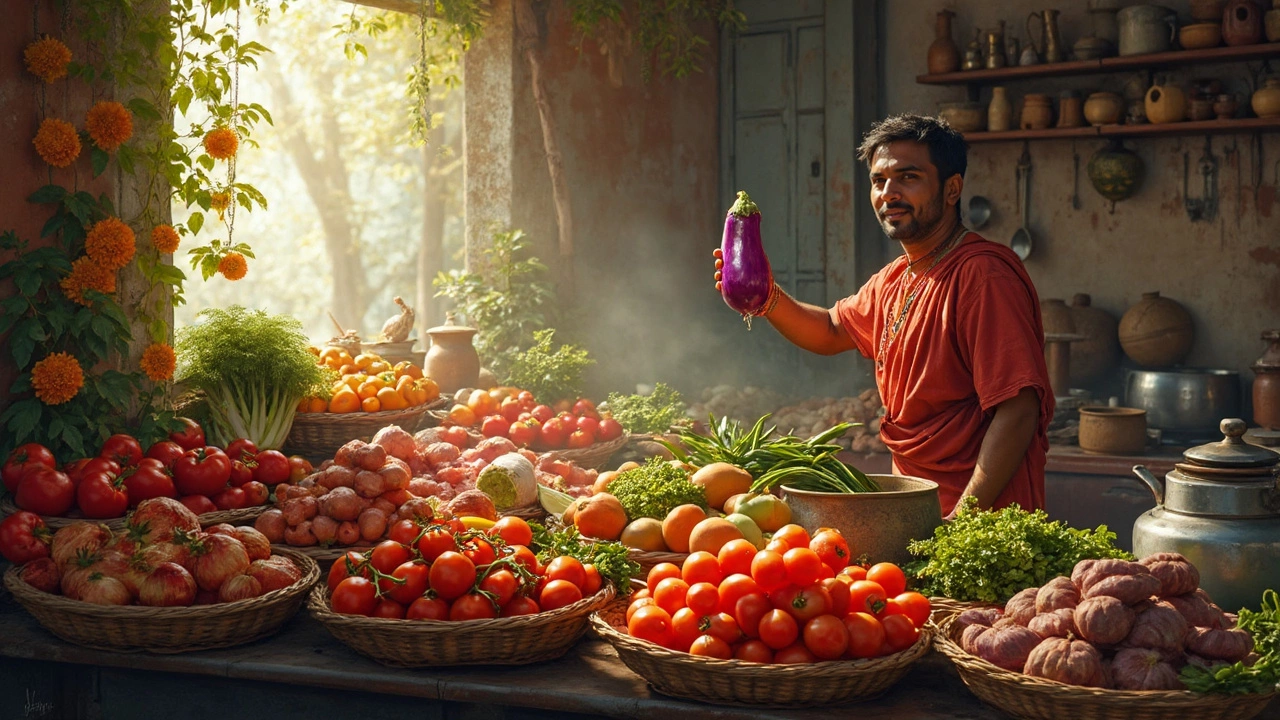Vegetables in Tamil Culture: Traditional Uses, Festivals, and Food Practices
When you think of vegetables, plant-based foods central to daily nutrition and ritual in Tamil households. Also known as kootu porul, they’re not just side dishes—they’re the backbone of Tamil meals, tied to seasons, temples, and family rituals. In Tamil Nadu, a meal isn’t complete without at least three kinds of vegetables: one cooked with lentils, one fried or stir-fried, and one pickled or raw. This isn’t just tradition—it’s a system built over centuries to balance nutrition, taste, and spiritual harmony.
Tamil cuisine, a regional food culture rooted in agrarian life and temple practices. Also known as Tamil Nadu cooking, it relies heavily on local harvests like drumstick, bitter gourd, eggplant, and colocasia leaves. These aren’t random choices. Drumstick, or moringa, is called the "miracle tree" for its health benefits and is used in soups during monsoon season to boost immunity. Bitter gourd, though tough to swallow, is eaten during festivals like Pongal to symbolize enduring hardship for future gain. Even the humble colocasia leaf, often dismissed elsewhere, is wrapped around rice and steamed in temple offerings during Karthigai Deepam.
South Indian vegetables, a distinct group of plants grown and prepared differently from North Indian varieties. Also known as Kongu or Chola vegetables, they include ridge gourd, snake gourd, and raw banana—all rarely found in Punjabi or Bengali kitchens. Why? Climate, soil, and water access shaped what grew where. Tamil farmers cultivated vegetables that thrive in humid, rainy conditions. That’s why you won’t find cabbage or carrots in old Tamil recipes—they simply didn’t grow here. Instead, you’ll find cowpea pods boiled with tamarind, or yam fried with mustard seeds, both of which appear in post-harvest feasts.
The vegetarian diet in Tamil Nadu, a way of eating shaped by religion, caste, and economic history. Also known as sattvic eating, it’s not just about avoiding meat—it’s about purity, timing, and intention. Many Brahmin families eat only vegetables harvested before noon, believing afternoon-picked food carries negative energy. Temple kitchens serve food made from only five core vegetables: pumpkin, sweet potato, yam, banana stem, and colocasia. These five are called the "Pancha Kariyam"—the five sacred greens. Even today, when a Tamil family hosts a wedding or a thread ceremony, the menu is built around these. No garlic, no onion, no mushroom—only what’s considered clean and light.
Vegetables here aren’t just food. They’re memory. A grandmother’s pickle recipe passed down through generations. A neighbor’s share of fresh okra after the rains. A child’s first bite of stir-fried drumstick during Pongal, served with jaggery rice. The vegetables you eat in Tamil culture tell you who you are, where you’re from, and what your ancestors believed.
Below, you’ll find real stories about how these vegetables show up in rituals, how they’ve changed over time, and what modern Tamil families still hold onto—even when grocery stores sell imported kale and quinoa.
